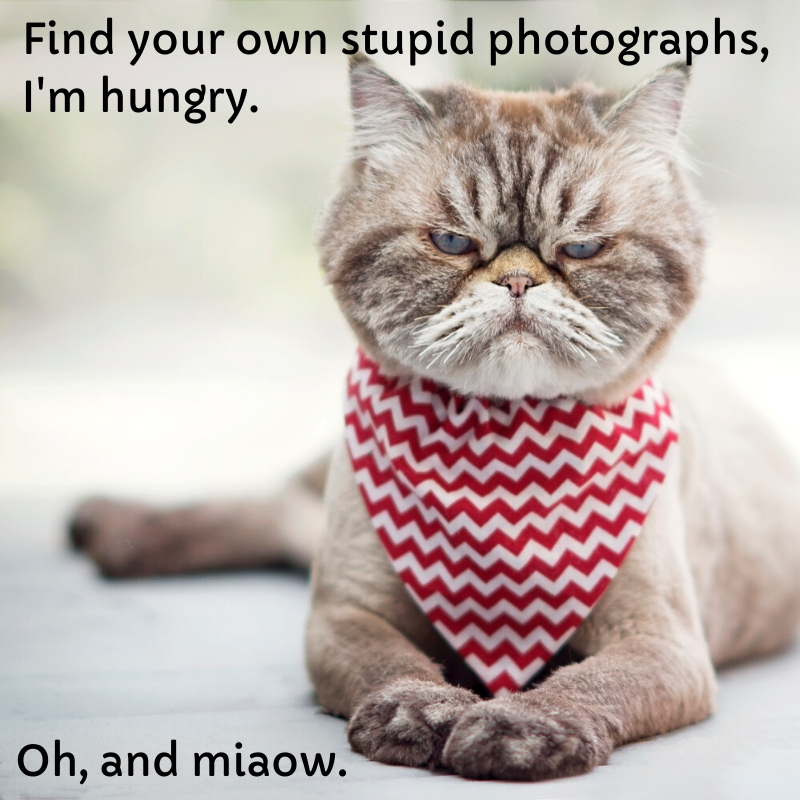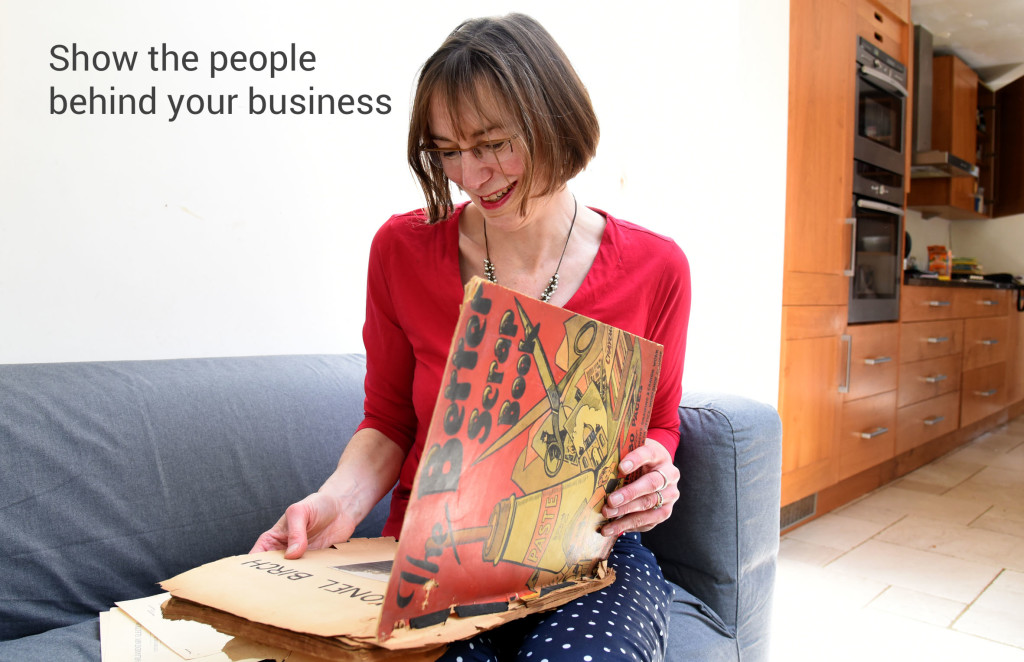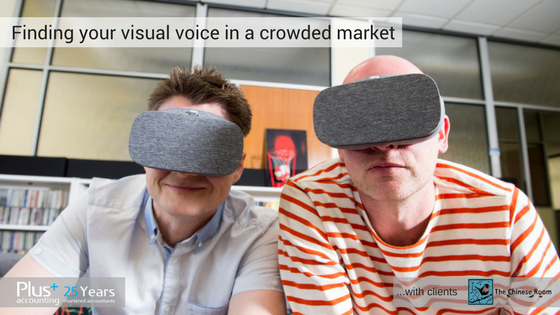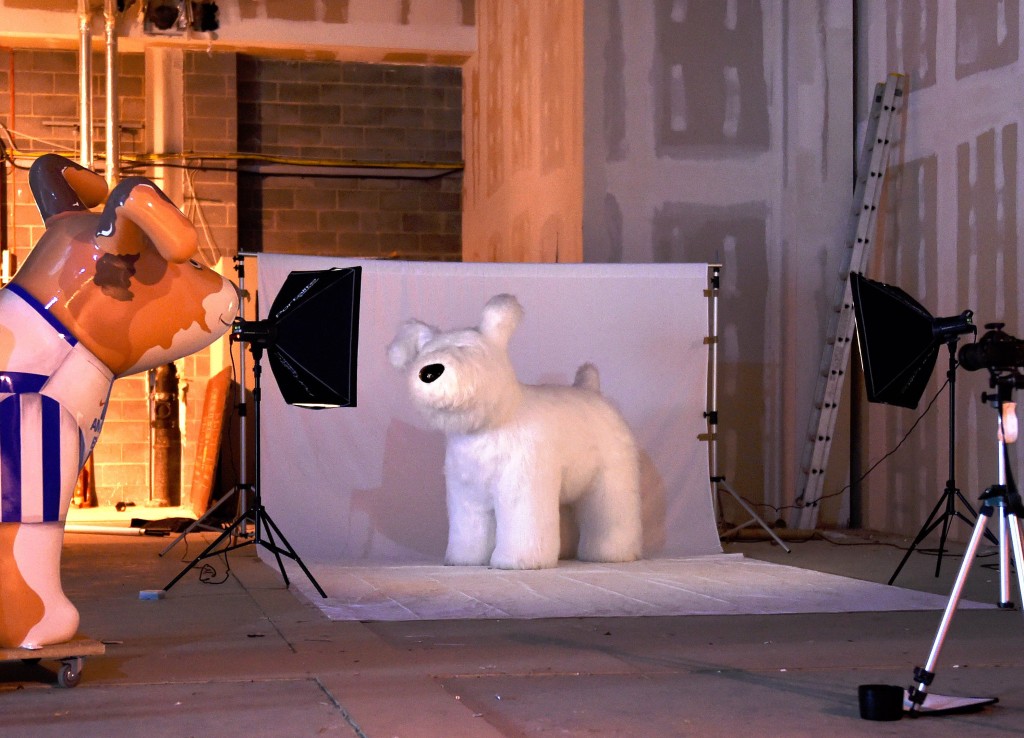Marketers: 6 tips to find and use the right photos

Pic Credit: Canva Pro
Written by Susi Doherty
Updated: February 2020
If you use photographs in marketing, then this article is especially for you.
Eyetracking studies note how vital it is to have the right visuals on your websites and that “Image quality is a significant factor in drawing attention” (check this article out by CXL Institute).
Hubspot notes that “Visual assets are the single biggest content contributor” to social media engagement.
However you currently use printed assets, consider that customers are currently also “rediscovering the joys of physically printed photos” (Prism Office).
The pressures of keeping up with the demand for visual assets can be overwhelming. Based on my own many chats and consultations with clients, and some points specifically provided for me by marketing experts for this article – here is some practical help. Under each image below, I’ve noted where and how I found that photograph.
problem 1: budget constraints

Image above: Free on Canva (Pro). Searched for ‘budget’
As with any budget spend, prioritising photographs in marketing is always tricky and a constant juggling act. Execs usually want to know why you can’t magic photos out of the air – especially as they can take them on their own phones or DSLRs at home… they are easy to get and free, aren’t they? Why spend money on them?
Measuring return on investment for the budget spent on photography isn’t necessarily easily done either but consider the following:
- Set measurable targets that break down the investment in each piece of content (ie written, visual, ad…) using the SMART method.
- This Hootsuite free tool is handy for producing figures for social media.
- A/B testing with different images
- Use engagement and click-through statistics with platforms such as each social channel’s analytic tools, Sprout Social, Google.
- Check your image search traffic in Google Analytics
Do remember the following in putting a business case forward for budget spend on visuals:
- It isn’t necessarily as expensive as you think (see below) to purchase what you need and to hire a good professional photographer
- Being planned and organised with what you need visually is vital to reduce spend
- Recycle your images as much as possible. Being organised and keeping an image library is absolutely the one prime thing that will save you time and money. Keep a log of usage and analytics and adapt accordingly.
- If you are expected to learn how to use a DSLR, ask “why”? The tool does not make the product plus learning the tech will gobble your value time up.
- If you have some particularly nice in-house pictures from internal events or suchlike, keep them in your library for future use. Remember random stuff often comes in handy too.
problem 2: finding the stock photo you need

Image above: Free on Pexels, I searched for ‘digital marketing’. Photo by RODNAE Productions
I am constantly amazed at the sheer number of articles on photographs in marketing that bang on about the need for any visual assets to be high quality and stand out from the crowd, that then go on to list free stock library sites as the one and only magic answer. What a load of tosh!
Don’t get me wrong, stock images are a vital part of your toolbox. I work in a photography agency and I use them! There are some brilliant sites, but there is also a lot of awful stuff, not necessarily for business use and also open to use by absolutely anyone.
Seriously, the damage to your mental health and time spent being sucked into a time hole are the first things to consider before opening a stock library! In order to make it a profitable and pleasurable experience, here are some top tips:
- Some of the paid libraries offer better business styled images and reasonable packages, cost based on usage usually.
- You need to search for the right term and be creative with that sometimes
- Remain sure to your company brand
- Don’t be too offbeat or settle for second best
- Watch out for horrific waxwork type ‘candid’ pictures
- There is not always a requirement to credit the photographer, but always do – out of politeness, respect and it presents a more professional approach (plus it helps them out)
- Canva is a great first base – especially as they have recently acquired Pexels and Pixabay and over a variety of subscriptions which are worthwhile.
- Remember copyright issues.
problem 3: lack of time

Image found on Unsplash. Free, and just searched for ‘time’ credit: Lukas Blazek
Not just using photographs in marketing, but finding the right image is SO important. Just because you can grab something willy-nilly from Google doesn’t mean you should (legally and quality-wise). Time is well spent getting this right. However, there are some things that will keep time to a minimum:
- If using stock imagery – be organised and get a process in place.
- Once you get in the swing of finding, using, analysing and storing images, it will cut right down on the time and stress it takes without those.
- Have your own stock library that you can dip into anytime you want.
If you want to use a professional photographer, remember these points to keep it smooth and quick:
- Who works with you best? Pick the right photographer for you – personality, experience, style and speed are all as important as cost, or you will end up wasting budget
- Branding. Have a visual guide ready for them. This should include style, usage and any other important elements (permissions of people, sensitivities, brand story).
- Maximise their time. Map out some of the key gaps you have in your image library, or go through the marketing plan and event schedule to see what you will need in the coming months.
problem 4: knowing how to keep on-brand

Image above: Vervate stock library, ©Liz Finlayson.
The image above was taken on holiday in Pompeii. The Italian Tourist Board could only have matched the ambience that the approaching thunderstorm gave to the place with an actual volcano, which thankfully they didn’t. The weather was right on brand! Know your brand and stick to it. If you don’t have Brand Guidelines, this is a helpful guide. What images add to your story, make your company alive, vibrant and stick out from the crowd?
“Stock photos can save small businesses, bloggers and content creators a lot of time. However, you need to keep the style of photography consistent to ensure that both your messaging and visual branding is clear and consistent across all communications channels. Strong consistent branding reinforces your identity and drives positive sentiment and trust.” Richard Excel, Excel Designs
problem 5: knowing which one to pick

Image above: Vervate stock library, ©Liz Finlayson
Which is the right egg? The photo above is of an egg holder in my Mum’s kitchen. She has hilariously put one rubber egg in to surprise and delight anyone cooking breakfast. Drives me nuts.
Trying to crack the problem of which image you need can also drive you nuts. It is the question I get asked the most actually, “What do we need pictures OF?” Top tips ahoy..:
- First impressions – particularly important on the Home page of a website. What one message do you want the image to give your customer? What emotion or reaction do you want to provoke in them?
- Storytelling – what are you explaining visually – you know the one picture tells a thousand words scenario..? Consider the importance of location, facial expression, the focus of the image, and how it will be interpreted.
- Audience – who are you wanting to speak to? What style of image will make them want to look further?
- Usage – where are you going to use an image? Is it right technically and does it fit with that platform? If you are getting some large posters printed, do you have a high enough resolution image?
- SEO – AI and visual mapping is increasing at a fast pace. Make sure the image is what you say it is, in the surrounding text, image title and alt-tag (see below)
- Brand – again, does it really fit your brand?
problem 6: getting it right technically

Image above: Vervate stock library, ©Liz Finlayson, repurposed here for the 6th time
These are easily missed but just as important as any other aspect. Arguably more so. There is no excuse for pixelated, stretched or badly cropped images – plus it damages your brand. Please be careful of things like automatic image optimisers, use them with caution as they are still liable to crop inappropriately or shrink too much and lose quality. Things to consider:
Usage – where are you going to use the image and what specifications does that entail? For example, Insta requires square, so make sure your image is croppable as such.
How are your images displayed on your web design? There is a trend for narrow letterbox images at the top of web pages currently. These may be great for keeping important messaging above the fold, but they can create real issues in the actual image. Imagine what you can see literally through a letterbox – it is a very wide and narrow image. Can you get your message in a beautiful image into that format or will it look really squished and contrived – or worse still just crop everyone’s heads off?
SEO – Images are incredibly powerful tools in your SEO toolbox. You just need to get it right. Make sure the title of the photograph is descriptive of the actual image and not just ‘Image xx.’ Do put an alt-tag in to ensure your content is accessible – THIS is a fantastic article to help you with that. Everything should fit together and make sense for the bots. Yoast do a good explainer here.
Analytics: I covered this briefly above, but getting a system in place for your image analysis is as important as what you do for any form of content you put out. Here is an article about how social usage links to customer service.
Size – Make sure the image is optimised for the best fit. That means the shape of the image, the literal size of it in cm or inches or pixels, and the size of the file itself. Speed is of course key.
the rabbit hole

Image above: Vervate stock library, ©Susi Doherty (on an iPhone)
There is often a misconception that using professional photographers is way to resource-heavy – particularly both in terms of time (where do you start briefing a photographer?) and budget.
Well in terms of budget, I can only, of course, speak for ourselves. We charge (Jan 2020) £800+VAT to spend a whole day with you creating a stock library of photographs that are yours to use exactly as and when you wish. The number of images is, of course, a bit ‘finger in the air’ as it depends on locations, people and planning for a start. However, that will likely give you enough pictures to use over and over on all your channels and potentially your annual campaigns. Consider the time, stress and actual budget you will save.
In terms of time, the fillable pdf guide just below here will help you to start seeing the wood for the trees and deciding what you need to get photographs of. You can see what overlaps – for instance, if you need lots of office-style stock images and some staff portraits, that would work well together to get a photographer in. BTW there’s no point in trying to squeeze so much in you have a stressful day, but with some good planning, you can get a lot done!
In conclusion – yes, there are lots of things to consider and many best practices to follow. However, please don’t let that stop you from getting stuck in. Your visual presence is way too important. What works best for you and your skillset? What gaps do you have that you need filling? Setting time aside to get yourself into a routine and build your confidence with this is time very well spent that will never be lost. Please do ask questions and make suggestions below, or on one of our social channels.
Categories

Your website’s photos: The one thing you need to know

Are you on the Worn Out Web?

Finding your visual voice in a crowded market

How to get the most from your visual content

Charity and Business

